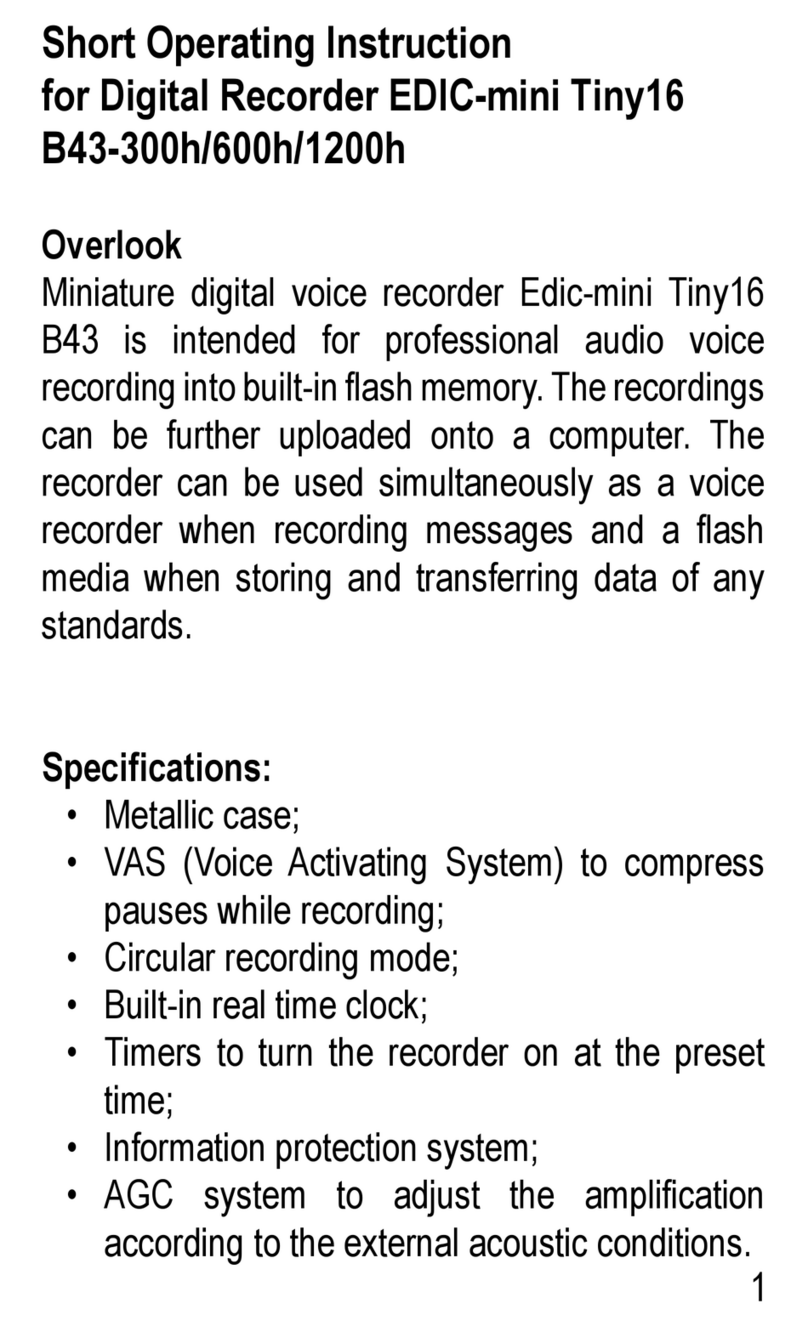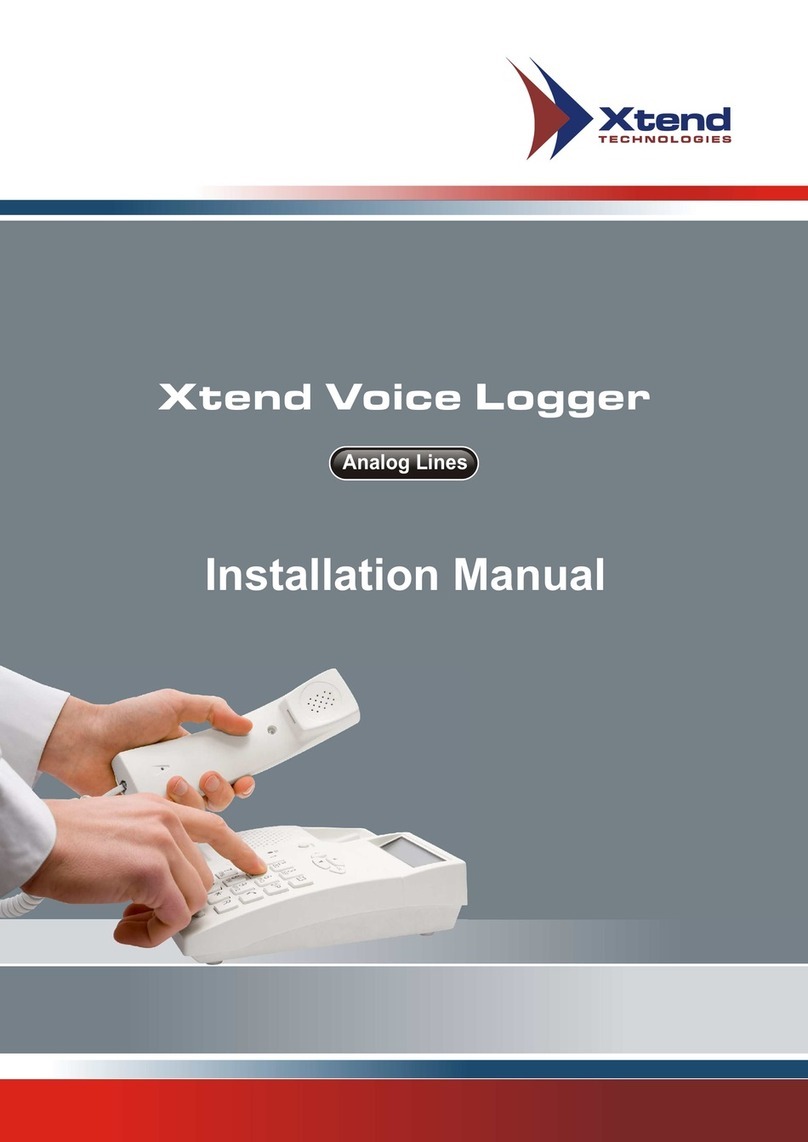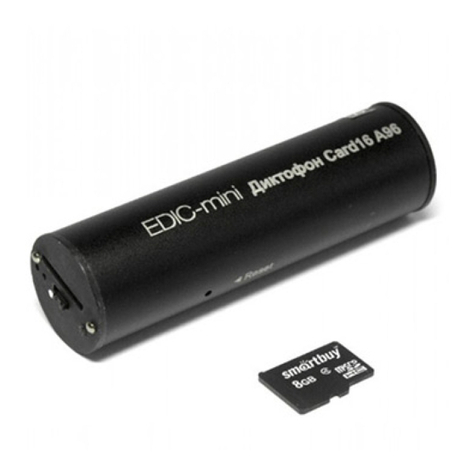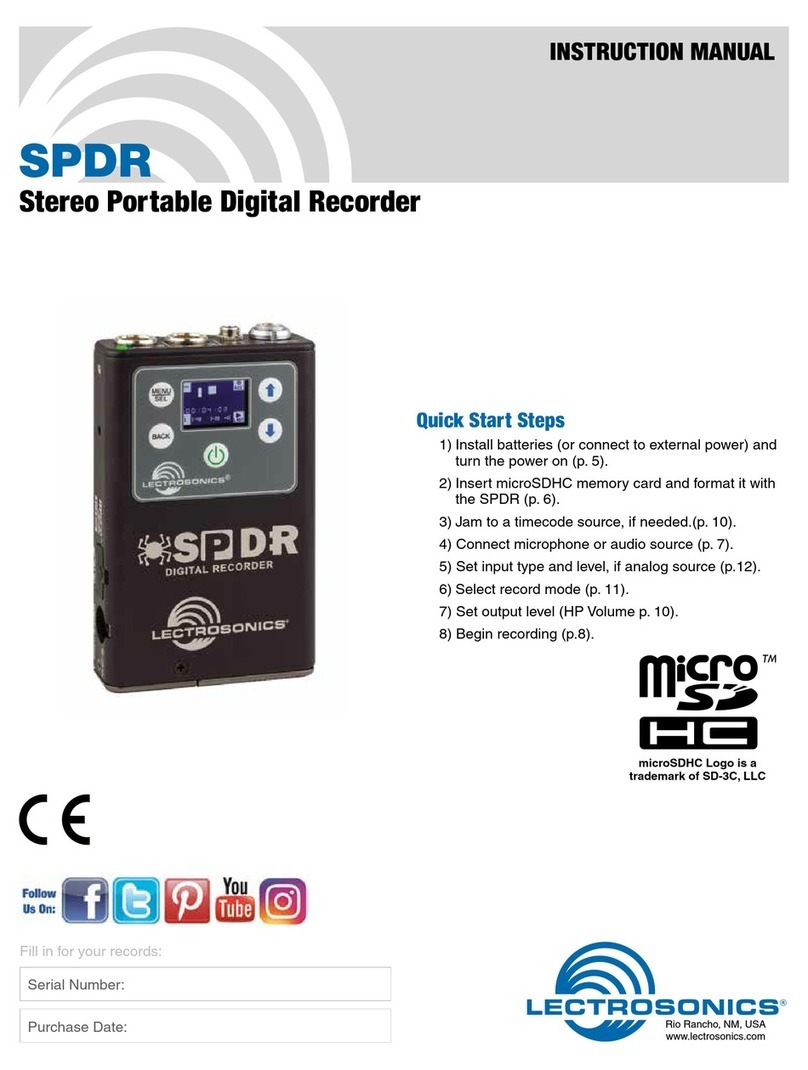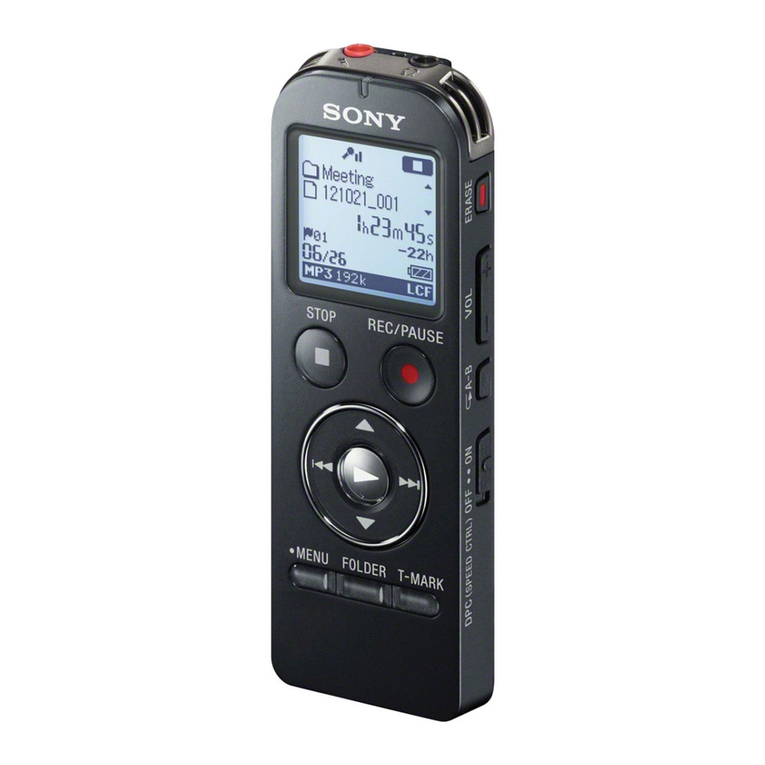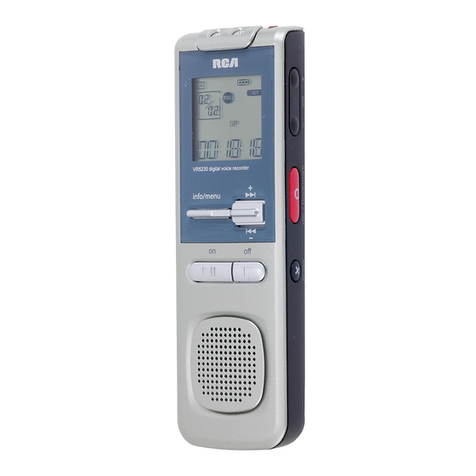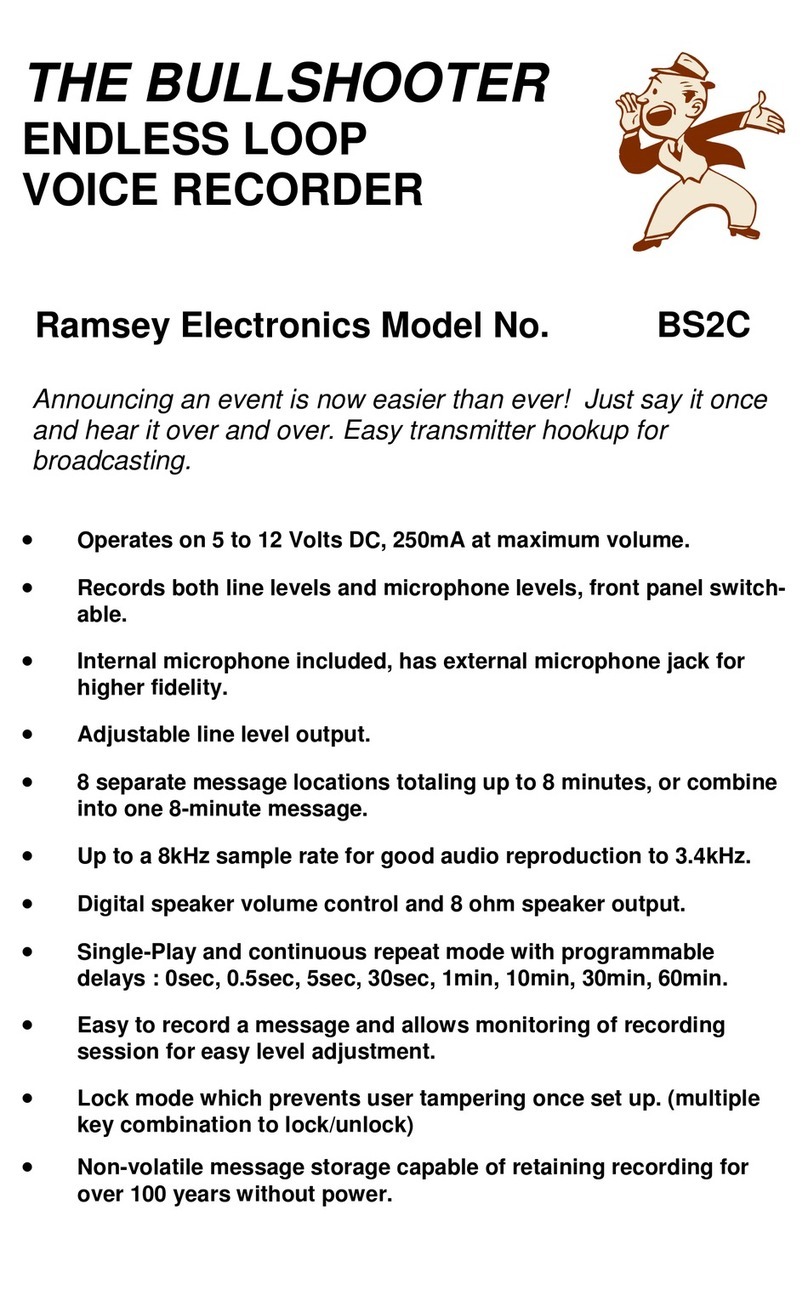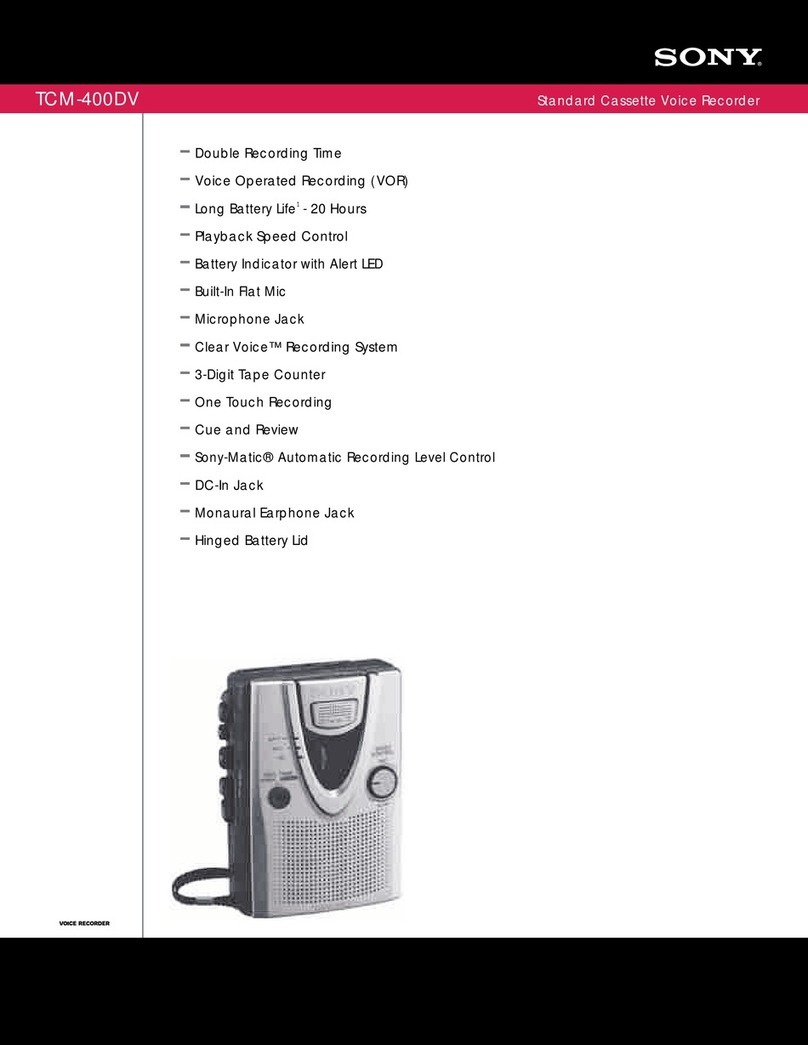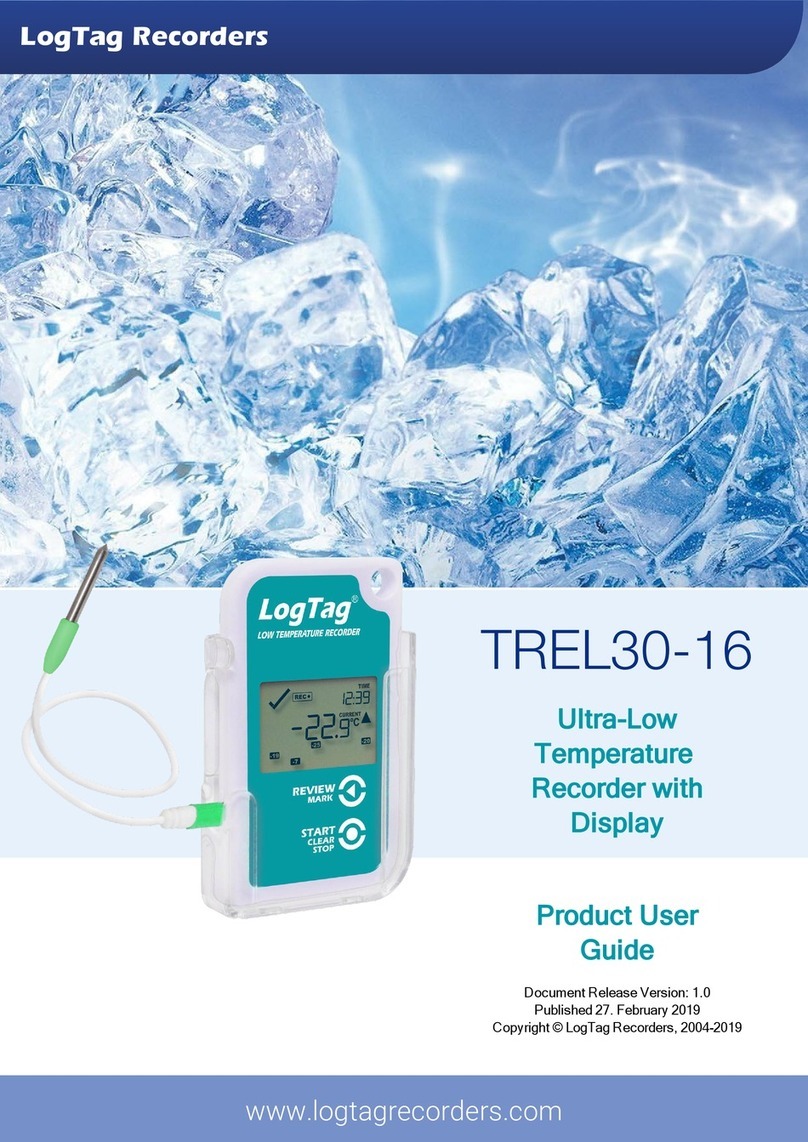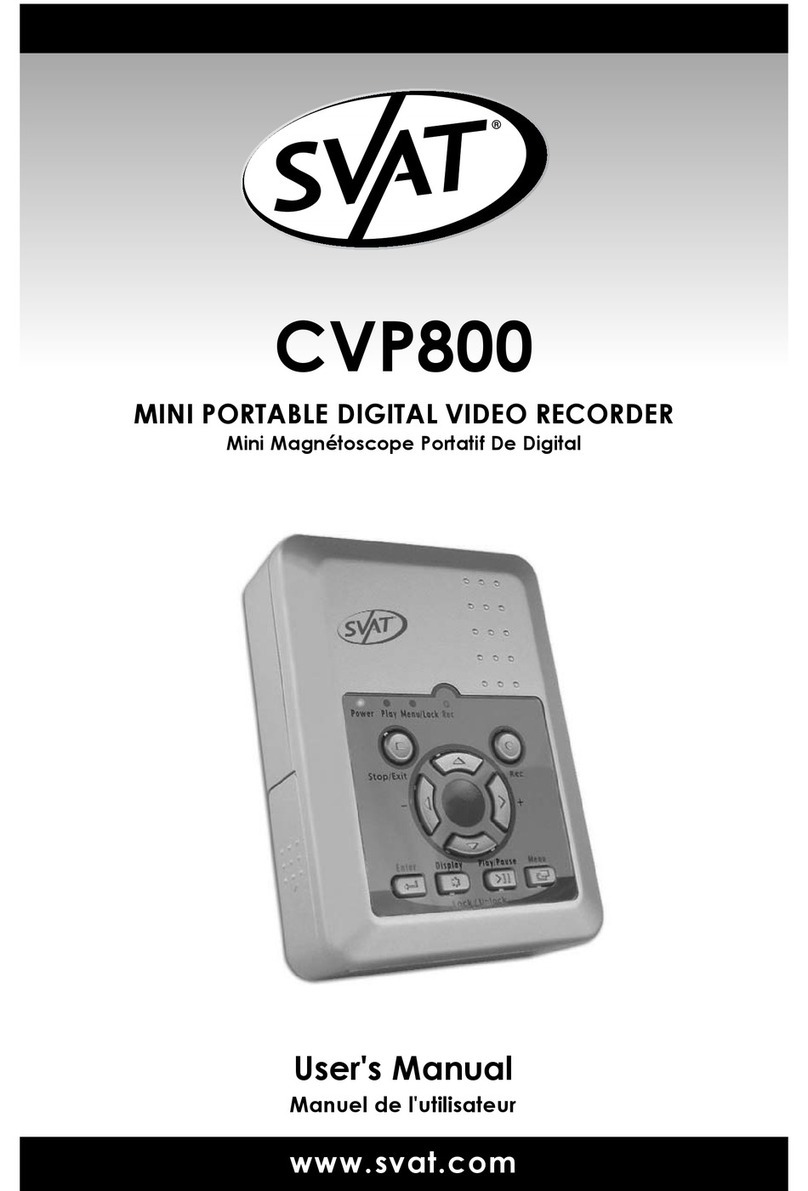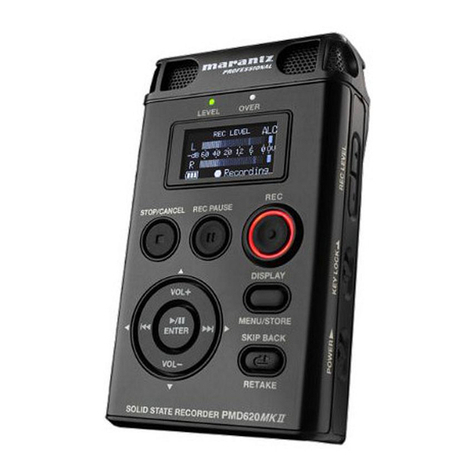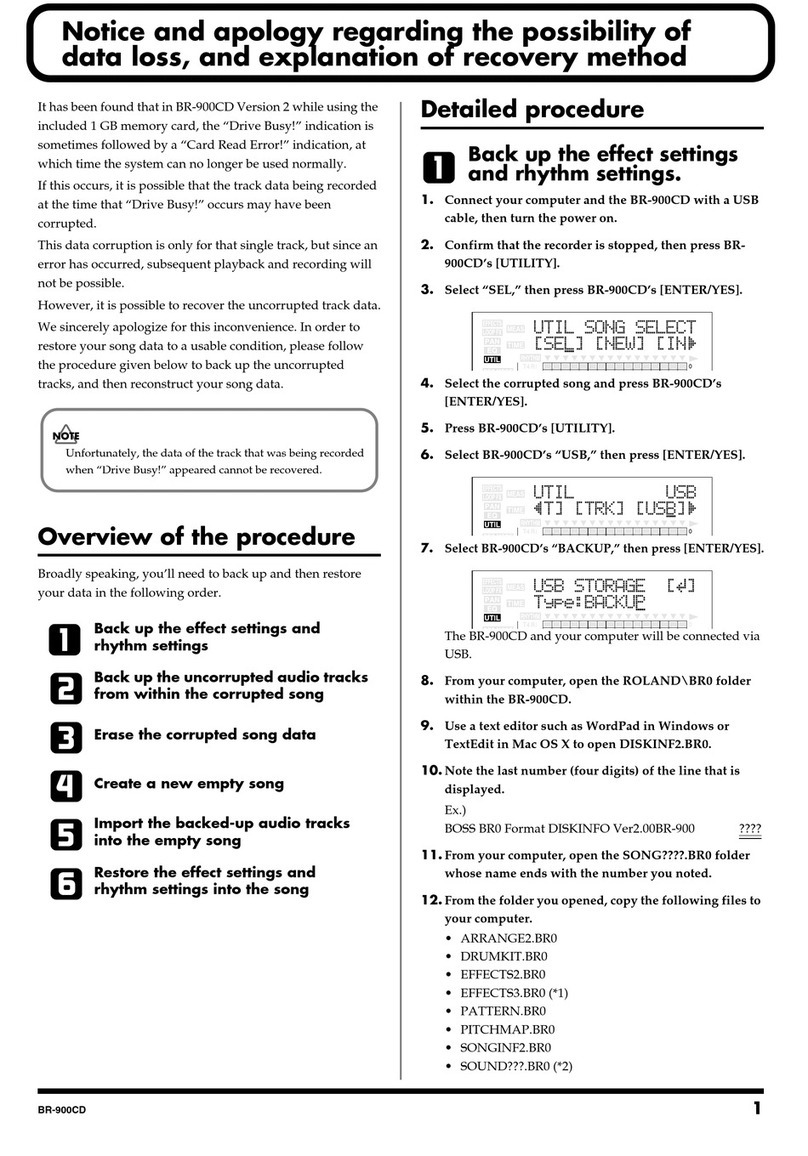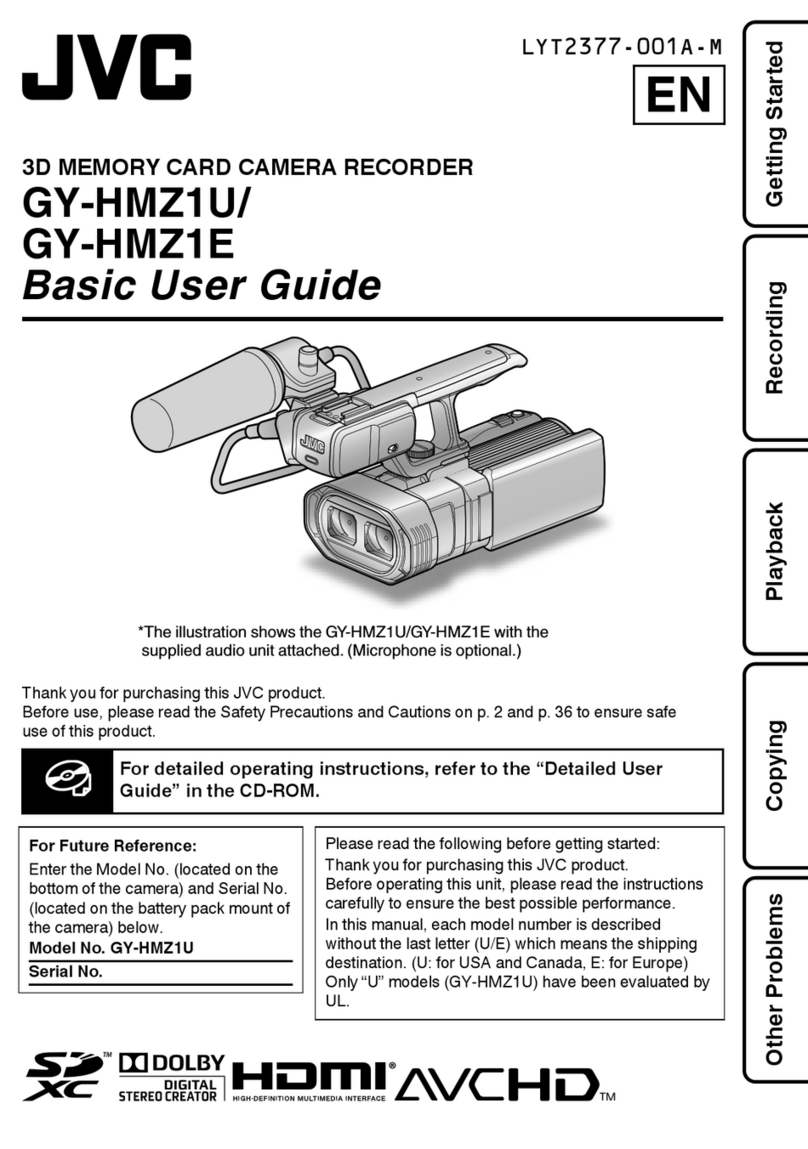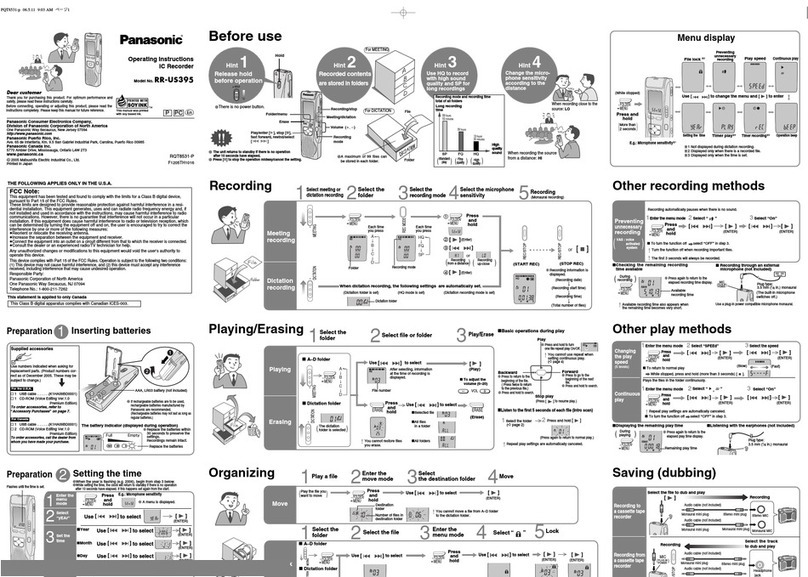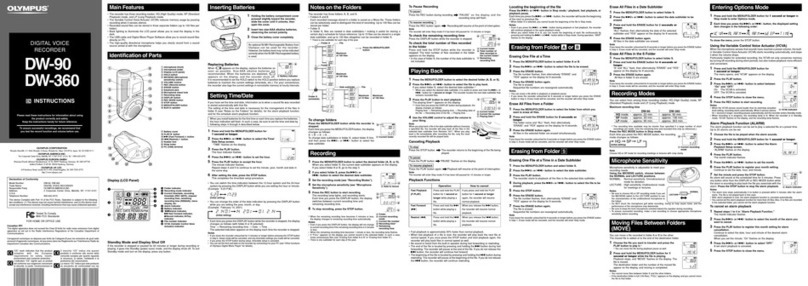
MTCR
LECTROSONICS, INC.
8
Timecode...
TC Jam (jam timecode)
When TC Jam is selected, JAM NOW will flash on the
LCD and the unit is ready to be synced with the time-
code source. Connect the timecode source and the
sync will take place automatically. When the sync is
successful, a message will be displayed to confirm the
operation.
NOTE: The headphone output will be muted when
entering the TC Jam page. Audio will be restored
when the cable is removed.
Timecode defaults to zero at power up if no timecode
source is used to jam the unit. A timing reference is
logged into the BWF metadata.
Frame Rate
The frame rate affects embedding of the timing refer-
ence in the BWF file metadata and display of timecode.
The following options are available:
• 30 • 23.976
• 29.97 • 30DF
• 25 • 29.97DF
• 24
NOTE: While it is possible to change the frame
rate, the most common use will be to check the
frame rate which was received during the most
recent timecode jam. In rare situations, it might be
useful to alter the frame rate here, but be aware
that audio tracks many not line up correctly with
mismatched frame rates.
Use Clock
Choose to use the clock provided in the MTCR as
opposed to a timecode source. Set the clock in the Set-
tings Menu, Date & Time on page 9.
NOTE: The MTCR time clock and calendar (RTCC)
cannot be relied on as an accurate time code
source. Use Clock should only be used in projects
where there is no need for the time to agree with
an external time code source.
Mic Level
-40 -20 +0
35
Cor Lappears here
Audio level
Gain in dB
Use the UP and DOWN arrow
buttons to adjust the input gain.
When the audio level meter
reading exceeds the zero at the
top, either a “C” or an “L” icon
will appear, indicating respec-
tively clipping in the non-safety
track (Split Gain mode) or
limiting (HD Mono mode). In HD
Mono mode, the limiter compresses 30 dB of input level
into the top 5 dB, reserved for “overhead” in this mode.
In Split Gain mode, the limiter would rarely be engaged,
but it will engage if necessary (with no graphical
indication) to prevent clipping of the safety track.
NOTE: See Record Mode.
HP Volume
Use UP and DOWN arrows to adjust headphone vol-
ume.
Scene & Take
Each time recording is started, the MTCR automatically
begins a new take. Takes can run up to 999. The scene
numbers can be manually entered and are limited to 99.
SD Card...
Format Card
This item erases all files on the card and prepares the
card for recording.
Files/Play
Choose to play the files based on their name. Use the
arrows to scroll, MENU/SEL to select the file and the
DOWN arrow to play.
Takes/Play
Choose to play the files based on scene and take.
Scene and take numbers can be manually entered, and
are embedded in the filenames and iXML headers of
recordings. Take number automatically increments each
time the record button is pressed. When browsing by
scene and take, recordings that span multiple files are
listed singly and played as one long recording.
File Naming
Filenames of the recordings contain industry standard
iXML chunks in the file headers, with the most com-
monly used fields filled in. File naming can be set as:
• Sequence: a progressive sequence of numbers
• Clock Time: the time of the internal clock at the
beginning of the recording; recorded as DDHHM-
MA.WAV. DD is the day of the month, HH is hours,
MM is minutes, A is the overwrite-prevention
character, incrementing to ‘B’, ‘C’, etc. as needed
to avoid a naming conflict A final character serves
as the segment identifier, being absent in the first
segment, ‘2’ in the second segment, ‘3’ in the third
and so on.
• Scene/Take: the progressive scene and take
automatically cataloged each time a recording
is begun; S01T001.WAV. The initial ‘S’ is meant to
suggest “Scene” but also serves as the overwrite
prevention character, decrementing to ‘R’, ‘Q’, etc.
as needed to avoid a naming conflict. The “01” after
the ‘S’ is the scene number. ‘T’ means take, and
the “001” is the take number. An eighth character
is used only for the second and subsequent (4 GB)
segments for very large recordings. Scene numbers
are entered manually. Take numbers increment
automatically.
